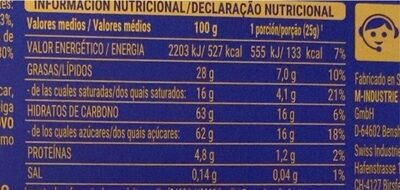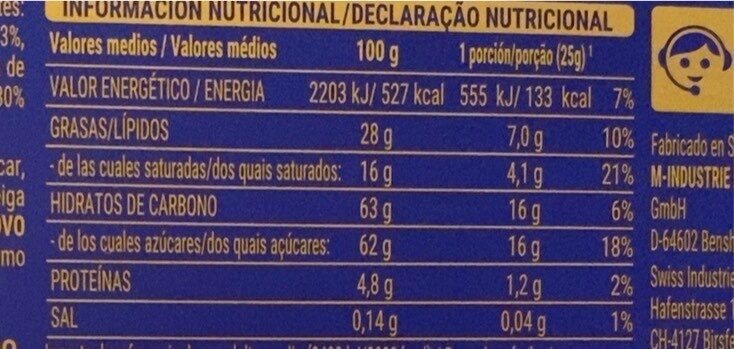Chocolate con leche con miel y almendras - Hacendado - 100g
Aquesta pàgina del producte no està completa. Podeu ajudar a completar-la editant-la i afegint-hi més dades a partir de les fotos ja disponibles, o fent-ne més amb l'aplicació de androide o iPhone / iPad. Gràcies!
×
Codi de barres: 8480000135001 (EAN / EAN-13)
Nom comú: Chocolate con leche con "nougat" de miel y almendras
Quantitat: 100g
Empaquetament: es:Green dot
Marques: Hacendado
Categories: Snacks, Aperitius dolços, Cacau i derivats, Xocolata, Xocolata amb llet, en:Milk chocolate bar with nougat
Etiquetes, certificacions, premis:
Lliure de gluten, Punt verd, Aliança Tropical

Botigues: Mercadona, Hacendado
Països on es va vendre: Espanya
Matching with your preferences
Entorn
Petjada de carboni
Empaquetament
Transport
Etiquetes
Report a problem
Fonts de dades
Producte afegit per kiliweb
Última modificació de la pàgina del producte per thaialagata.
La pàgina del producte, també editada per alia, inf, moon-rabbit, roboto-app, yuka.sY2b0xO6T85zoF3NwEKvlhJfCuSDrxLWDyHThBWv4Y2IIqPafvtgy6jaLag, yuka.sY2b0xO6T85zoF3NwEKvlncWeObbojXAN0Xivk2QnImqK7q3YNd22aniM6s.









